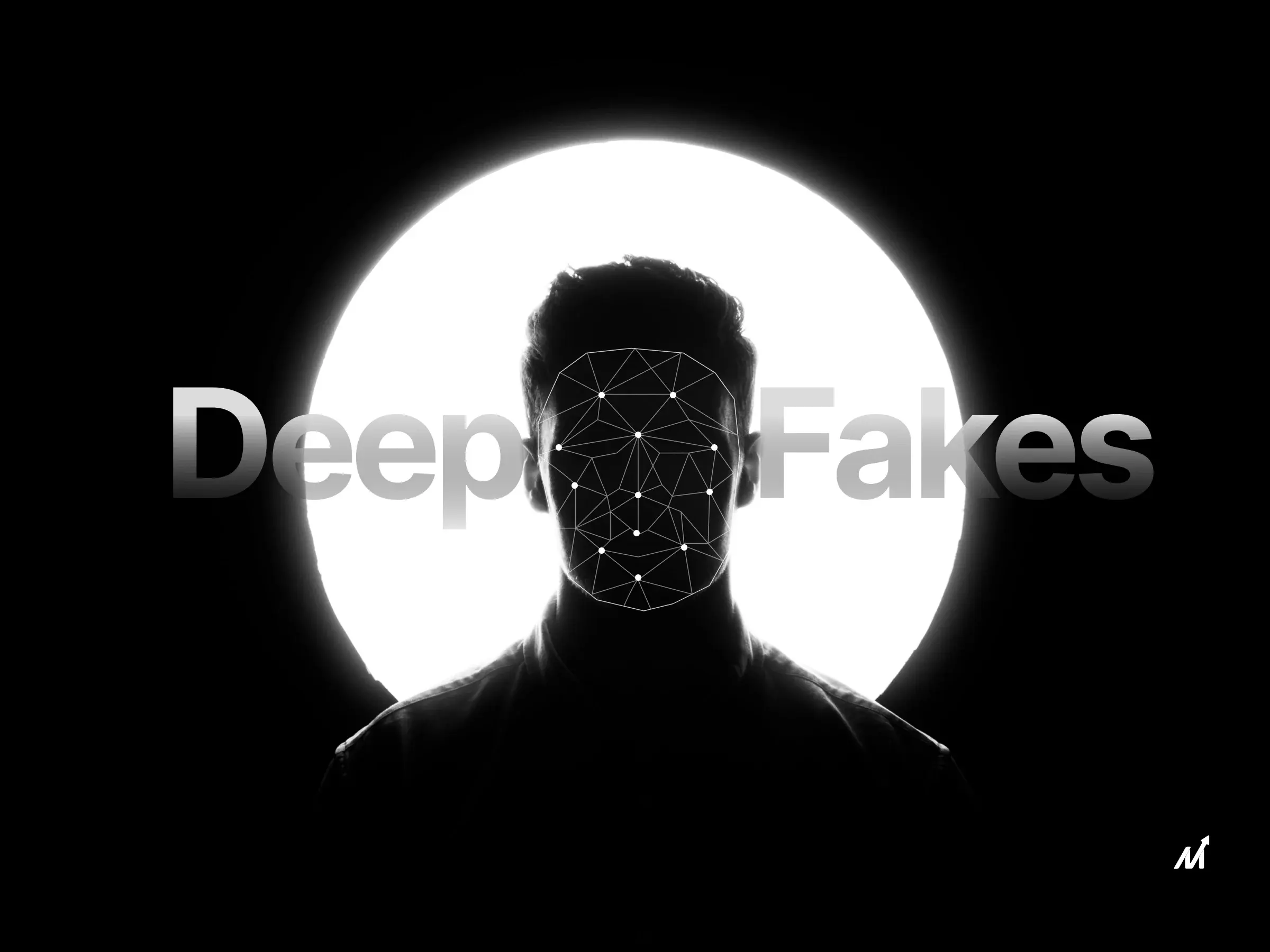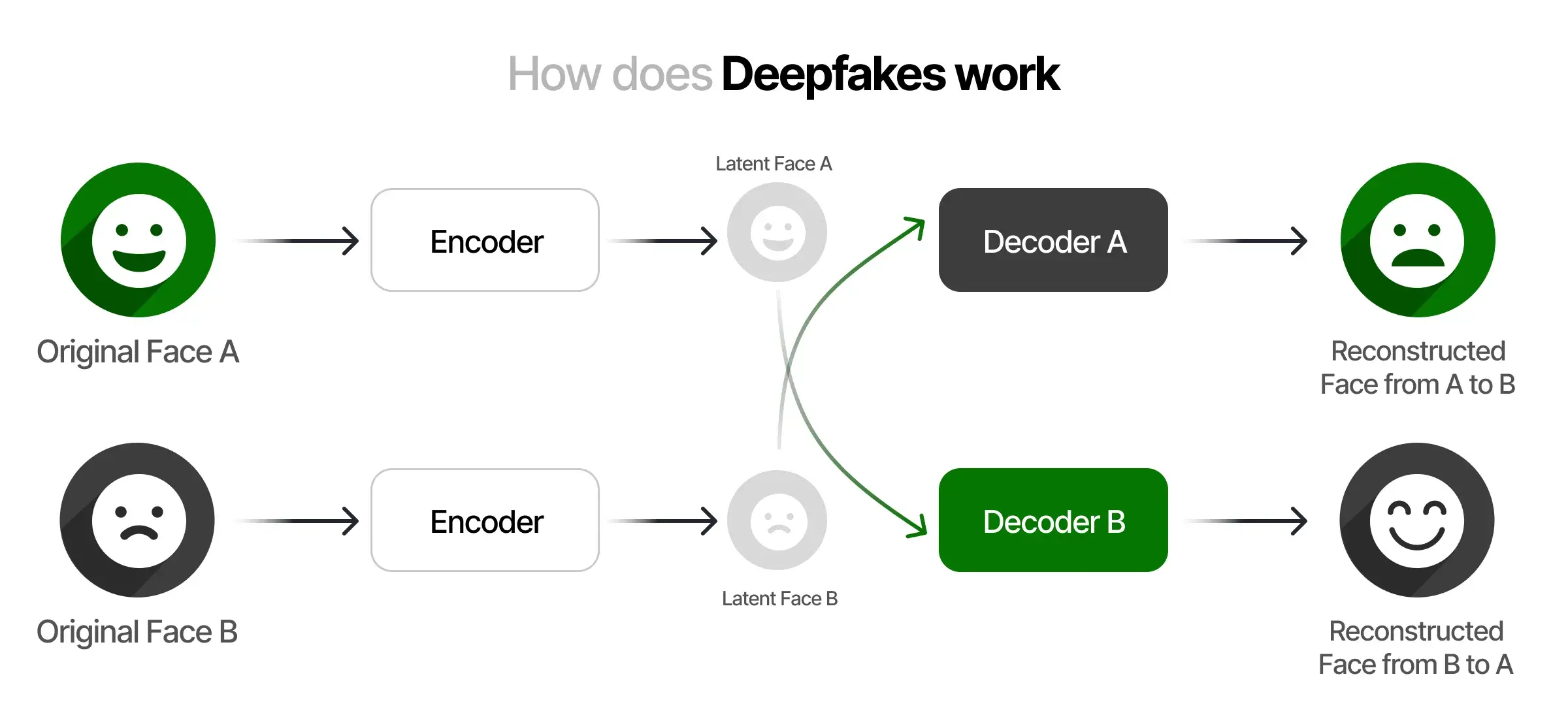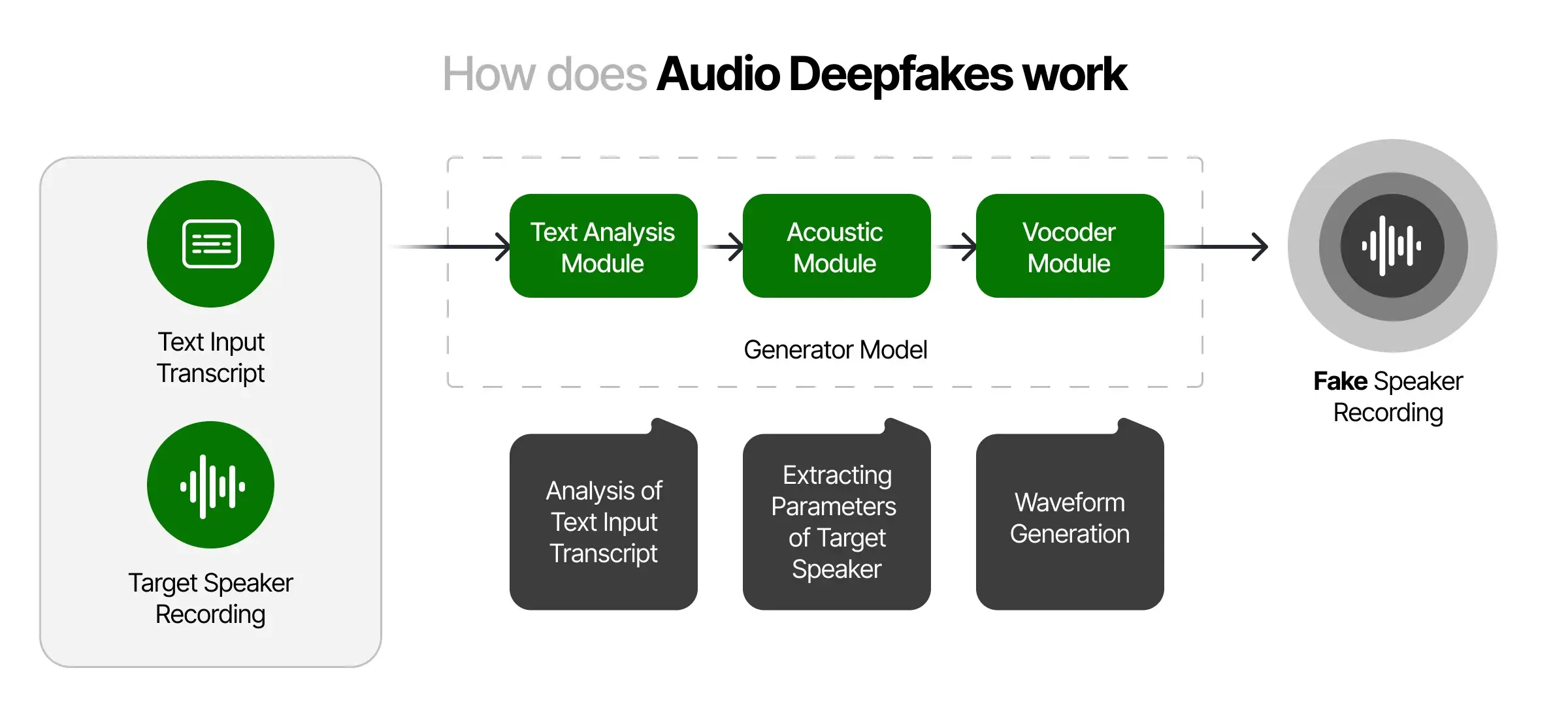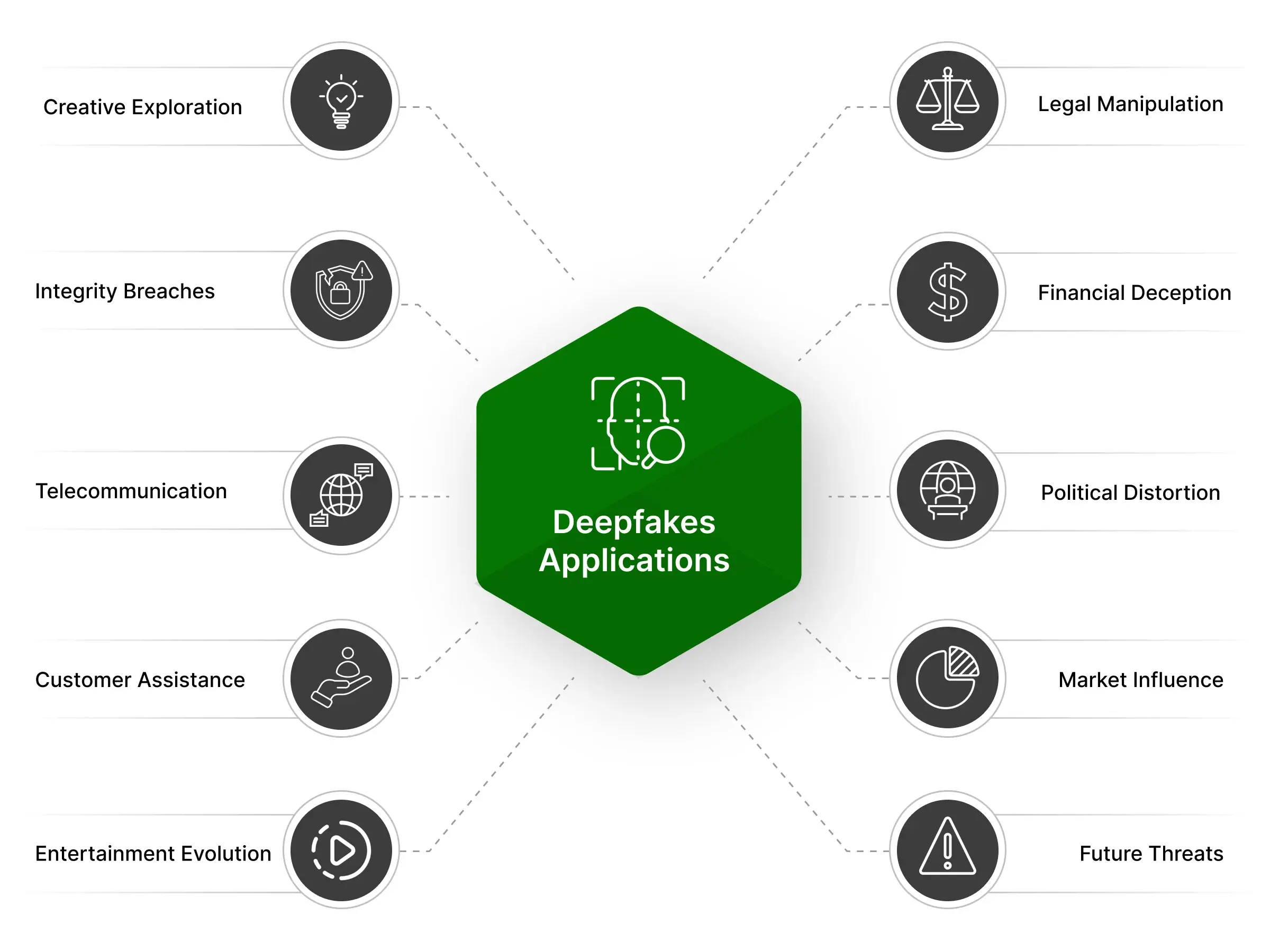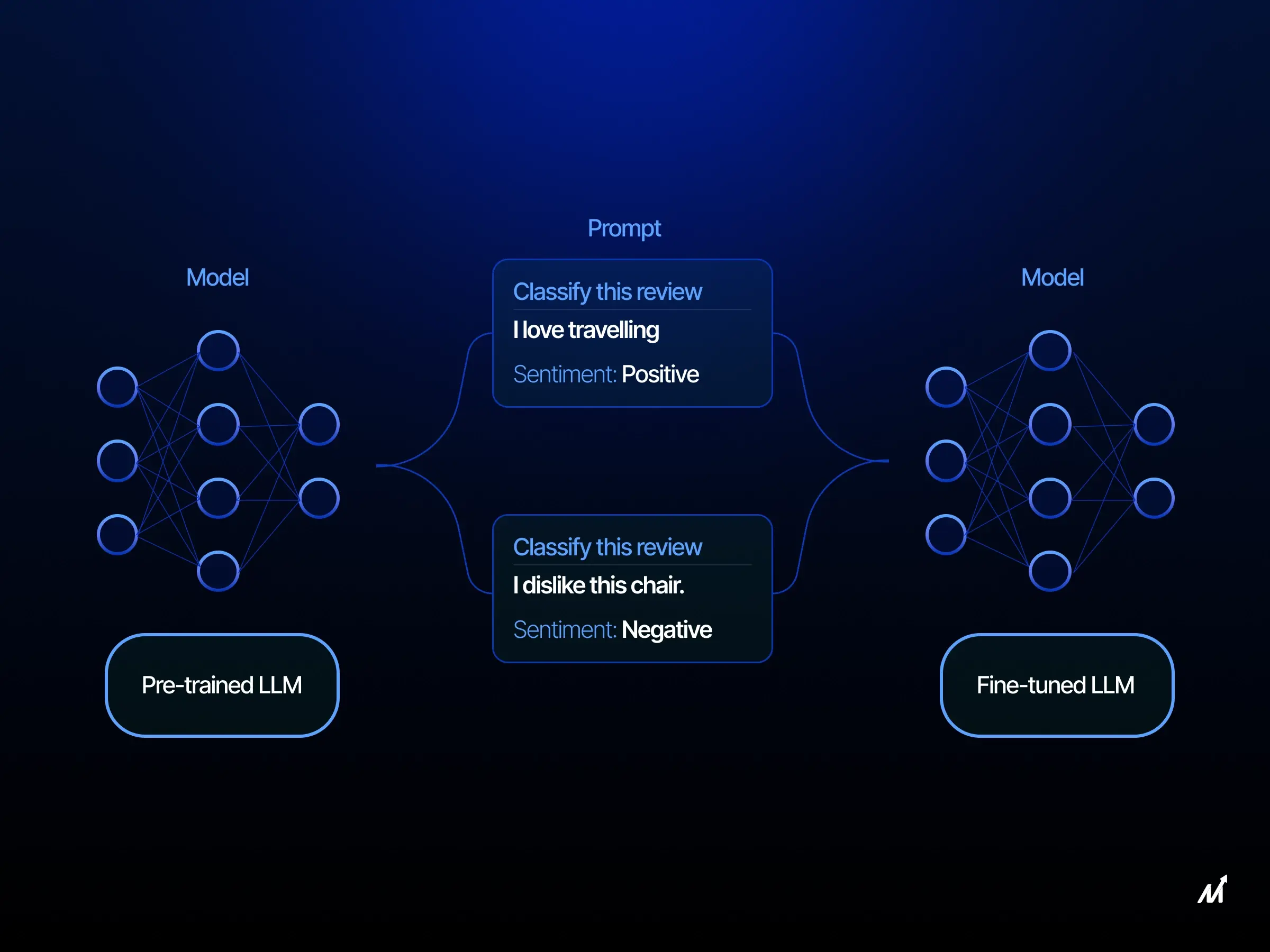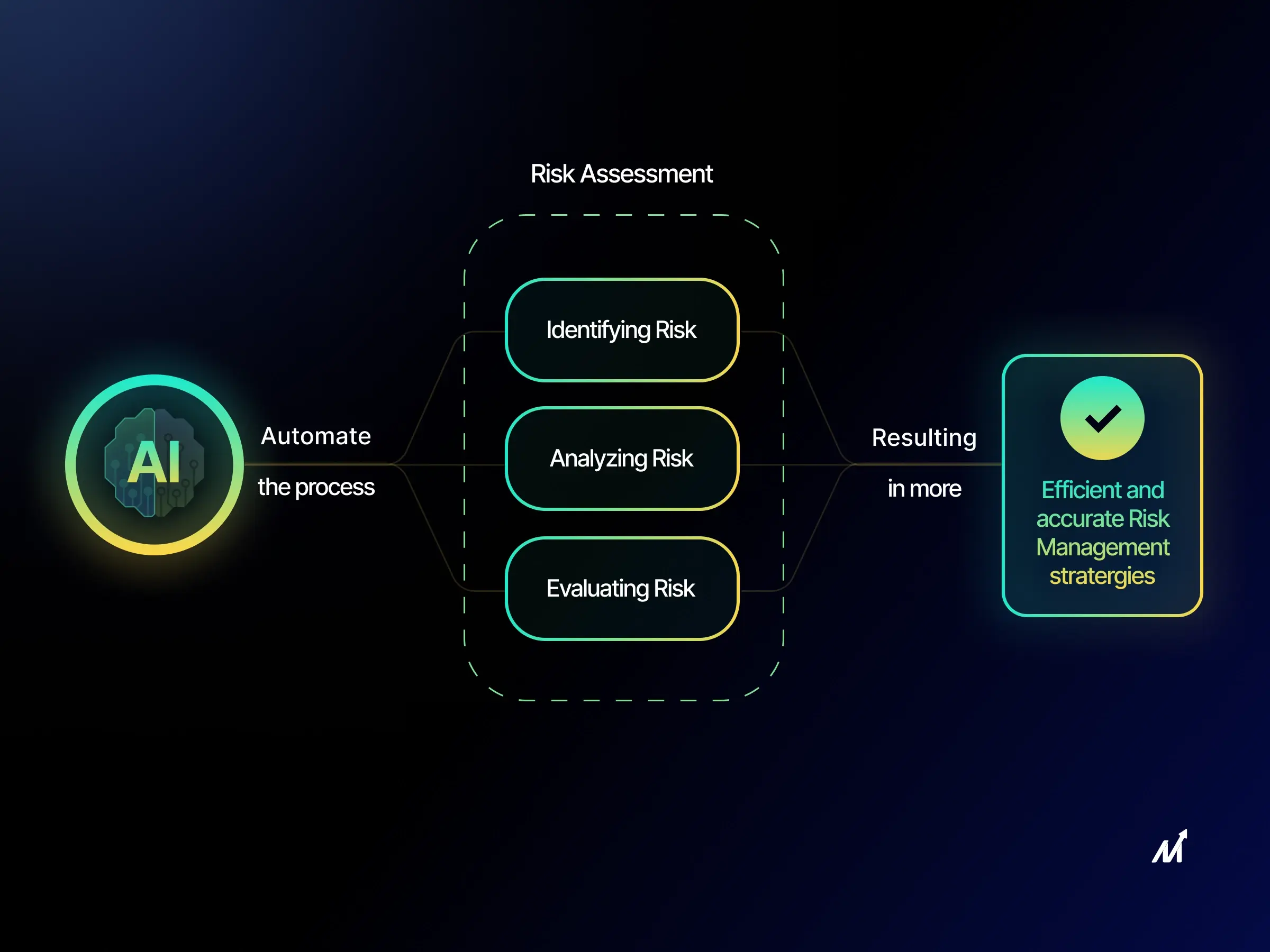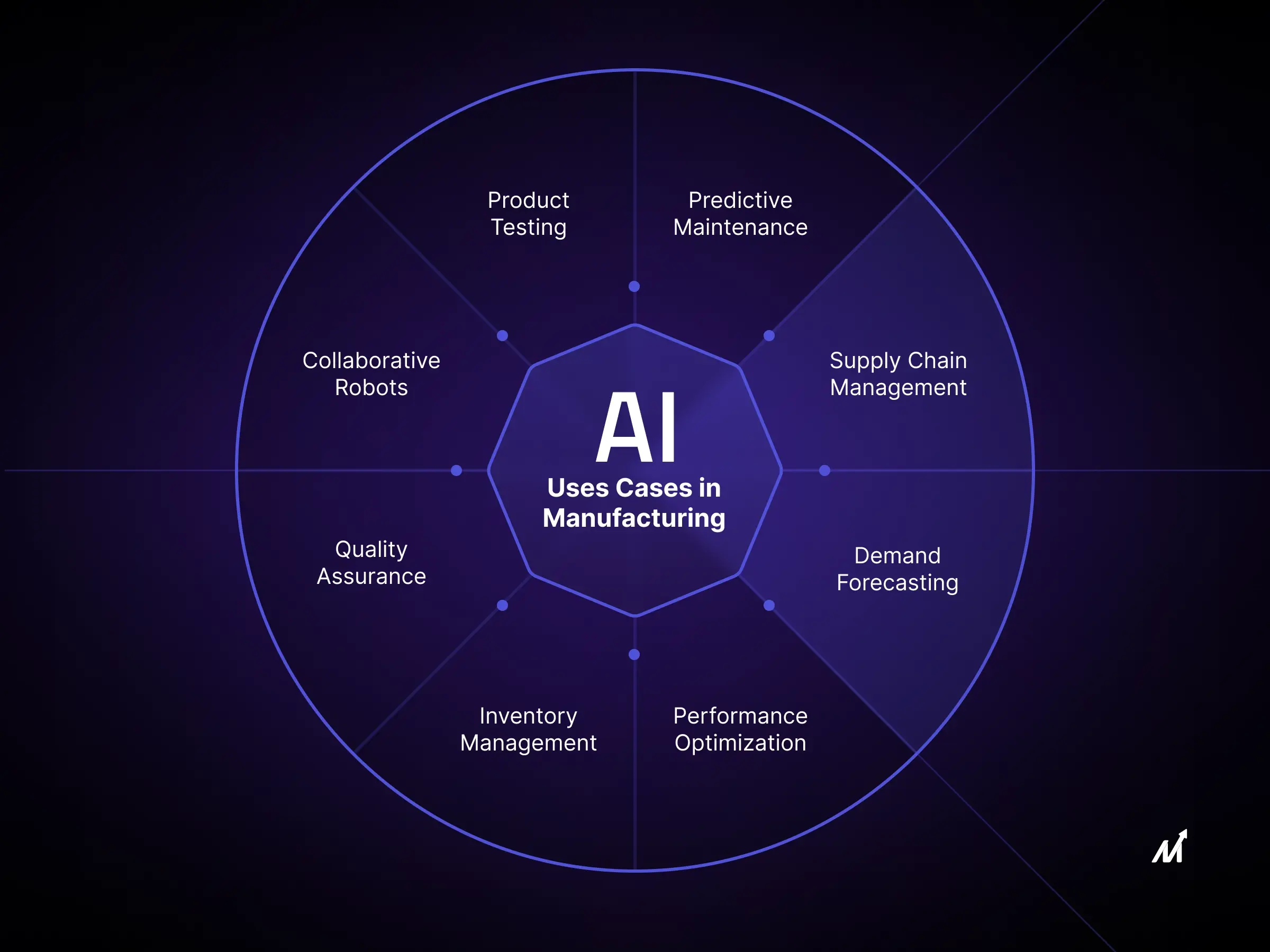Deepfakes AI? To be honest, that is both interesting and a little alarming. Imagine a system based on deep learning that can produce movies or audio almost identical to the originals. It resembles the collision of science fiction and reality, but it exists.
(Learn more about how to improve the text-audio generation quality with AI in our latest blog here : AudioLDM: Revolutionizing Text-to-Audio Generation Quality – Markovate)
What is Deepfakes?
Everybody has seen movies where someone’s face is swapped out for another person’s, or a fresh video is created to give the impression that someone is doing something they were never actually doing. And this is exactly done with deepfakes AI. This game-changing innovation has the potential to upend society significantly.
But there’s more to this tale. In a 2022 deepfake video, the president of Ukraine appeared to appeal to his forces to surrender.
Deepfake video of Volodymyr Zelensky surrendering surfaces on social media
What influence wrong information may have! It provides a compelling example of the potential drawbacks of the deepfake technology.
But the news isn’t all negative. Deepfake along with generative AI technology has a variety of exciting applications. As with the music in video games, think about how they could change customer service or enhance enjoyment. There are no restrictions on what may be made. Thus it seems like entering the future with artificial intelligence.
But caution is required. It’s challenging terrain, like trying to land a rocket on Mars. While innovative, deepfakes have drawbacks as well. In this dangerous frontier, we must exercise caution. The kind of challenge that piques our minds but needs keen examination for detection and avoiding innovation from turning into manipulation.
How Do Deepfakes Work?
Deepfakes are composed through a marriage of two intricate algorithms: the generator and the discriminator. These form the dual engine that crafts and refines illusory content. The generator lays the groundwork by establishing a training data set aligned with the anticipated outcome, thus initiating the digital imitation. Simultaneously, the discriminator undertakes an analytical task, discerning the authenticity or fictitious nature of the content’s preliminary rendition. This dual operation is reiterated, honing the generator’s proficiency in materializing convincing facsimiles and sharpening the discriminator’s ability to detect imperfections, guiding the generator in its corrective endeavor.
This elegant synergy between generator and discriminator creates a Generative Adversarial Network (GAN). This network employs deep learning to decipher authentic patterns within tangible images and leverage them to fabricate the simulated counterparts. While sculpting a deepfakes photograph, the Generative Adversarial Network surveys the subject’s photographic captures from various viewpoints, assimilating comprehensive nuances. In deepfakes videos, the system extends its analysis to dimensions including behavioral attributes, kinetic motion, and vocal cadence. Multiple iterations through the discriminator optimize the final product’s fidelity.
The genesis of deepfakes AI videos embraces dual methodologies. The first employs a genuine video of the subject, manipulating it to exhibit actions and utterances never performed with the help of artificial intelligence; the second technique consists of grafting the subject’s facial features onto a distinct individual, an art known as face swapping.
Techniques of Deepfakes
Various techniques underpin the deepfakes AI craft, such as:
- Source Video Deepfakes: Utilizing an authentic video, the neural network-based deepfakes autoencoder interprets the constituent elements like facial expressions and gestural language, superimposing them onto the selected video. This intricate mechanism comprises an encoder, translating vital characteristics, and a decoder, transposing these features onto the desired footage.
- Audio Deepfakes: In the audio domain, a GAN duplicates the tonal attributes of a voice, constructs a replica based on vocal rhythms, and empowers the creator to articulate any desired phrase through this cloned voice. This tactic has gained traction among interactive media developers.
- Lip Syncing: This technique in deepfakes leverages voice recordings, synchronizing them with visuals to achieve a realistic illusion of speech. When accompanied by deepfakes audio, this method enforces an additional layer of fraud supported by the capabilities of recurrent neural networks.
(Learn more about different applications of generative AI: Revolutionizing Industries with Generative AI Applications)
The Technology Required to Develop Deepfakes AI
As we traverse into the domain of deepfakes innovation, it’s a continuous evolution marked by precision, ease, and ubiquity. The advancement and refinement of the following crucial technological components is propelling this progression:
-
GAN Neural Architecture: Pivotal in constructing all facets of deepfakes imagery, this employs both generator and discriminator methodologies to achieve its effects.
-
The Utilization of Convolutional Neural Networks: These networks recognize intricate visual data patterns, and they have become essential in tasks involving face identification and movement tracking.
-
The Role of Autoencoders: As a specialized facet of neural network engineering, autoencoders pinpoint vital characteristics in subjects, such as bodily movements or facial cues, to adapt them into original video sources.
-
Implementation of Natural Language Processing: NLP algorithms venture into creating auditory deepfakes content, meticulously examining a subject’s vocal nuances, and synthesizing authentic text based on these qualities.
-
The Need for High-Performance Computing: deepfakes development commands a robust computational framework, and this type of computing fulfills the intensive processing demands intrinsic to deepfakes.
Within the official document titled “Increasing Threat of Deepfakes Identities” by the U.S. Department of Homeland Security, it has been elucidated that numerous tools are routinely employed for generating deepfakes content in fleeting moments. This arsenal comprises innovations such as Deep Art Effects, Deepswap, Deep Video Portraits, FaceApp, FaceMagic, MyHeritage, Wav2Lip, Wombo, and Zao.
What Is the Spectrum of Deepfakes AI Applications?
The landscape of deepfakes AI utilization is diverse and ever-expanding. Below is an exploration of some of the key areas where this technology has made a mark:
- Creative Exploration: In the art world, deepfakes enable the fusion of existing artistic content to birth novel musical creations, pushing boundaries and challenging conventional norms.
- Integrity Breaches: There have been alarming instances where deepfakes have been weaponized for reputation damage and coercion. This includes fabricating compromising scenarios, engaging the target in illicit actions, and creating nonconsensual content for extortion or humiliation.
- Telecommunication Personalization: Leveraging deepfakes algorithms, caller response mechanisms can now provide tailored feedback, including call management, forwarding, and specialized receptionist functionalities.
- Automated Customer Assistance: With simulated voices, customer support systems can perform basic operations, such as account inquiries or complaint resolutions, adding efficiency without sacrificing human-like interaction.
- Entertainment Evolution: Film and gaming industries utilize deepfakes technology to recreate and modulate actors’ voices for specific sequences. This tool is handy for challenging scenes, post-production, or time-saving measures. An illustration of this is the 2023 fictional portrayal of Dwayne “The Rock” Johnson as Dora the Explorer—a humorous twist delighting audiences.
Other Popular Applications
- Legal Manipulation: A concerning development is the production of fabricated images or audio clips used as deceitful evidence to manipulate the legal process, raising ethical and legal debates.
- Financial Deception: The impersonation of identities through deepfakes to access personal and financial information poses a significant risk. It includes mimicry of high-ranking personnel, leading to grave cybersecurity concerns.
- Political Distortion: Creating misleading videos of political figures has become a tool for disinformation. The deepfakes involving Ukrainian President Volodomyr Zelenskyy are a stark example, generating chaos and influencing public sentiment.
- Market Influence: Crafted deepfakes materials have the power to impact corporate stock values. The market can be manipulated by simulating videos of executives making detrimental statements or falsely promoting breakthroughs.
- Future Threats in Communication: As highlighted in the U.S. Department of Homeland Security’s “Increasing Threat of Deepfakes Identities” report, the upcoming use of deepfakes technology may extend to text messaging. This may allow malicious entities to emulate an individual’s unique texting pattern, marking a new frontier in this ever-evolving field.
Is There Legal Accountability for Deepfakes AI?
In a broad sense, deepfakes AI remains within the confines of legality, rendering law enforcement mostly powerless against the genuine hazards they create. Only under specific circumstances do they cross the legal boundaries, such as in instances related to child exploitation, libel, or inciting hatred.
In the landscape of U.S. law, only a trio of states have established regulations that pertain directly to deepfakes. As cited by the authoritative Police Chief Magazine, Texas has criminalized deepfakes intended to manipulate election outcomes, while Virginia has prohibited the spread of deepfakes-created pornography. Simultaneously, California has enacted statutes for the detection and prevention of the utilization of political deepfakes in the critical two-month period leading up to an election and the creation of non-consensual deepfakes of adult content.
The void in comprehensive legal mechanisms to tackle deepfakes stems largely from the general unfamiliarity surrounding this emergent technology and the myriad of applications and risks it embodies. This knowledge gap has led to an environment where victims of deepfakes frequently find themselves without legal redress, navigating an uncertain landscape in most instances involving this form of synthetic media.
What Makes Deepfakes AI a Concerning Threat?
Deepfakes AI content carries inherent risks and a troubling potential for harm, even though they fall within the bounds of legality. The array of risks includes:
-
Subjecting individuals to blackmail and the erosion of personal reputation, thereby trapping them in legal dilemmas.
-
Exploitation by national threat actors for manipulative and harmful agendas.
-
Tampering with elections through fabricated video footage of political candidates.
-
Market manipulation by crafting fictional content to sway stock market valuations.
-
Impersonation-based fraud is aimed at illicit access to financial information and Personally Identifiable Information (PII).
Strategies to Counter Deepfakes AI
Identifying deepfakes AI manipulations is an evolving challenge, with specific warning signals aiding the detection. Here’s what to look for as potential indicators of deepfake video:
-
Fake video will have facial positioning that seems oddly placed or misaligned.
-
Movements of the face or body that appear artificial or forced.
-
Discrepancies or abnormalities in coloration.
-
Fake images will have visual imperfections or oddities that are noticeable upon close examination or magnification.
-
Mismatched or inconsistent audio components.
-
A lack of natural blinking within the characters.
In the world of text-based deepfakes AI, vigilance must be maintained for the following clues:
-
Errors in spelling.
-
Language or sentence structures that lack fluidity.
-
Email addresses that raise suspicion.
-
Expressions or terminology inconsistent with the purported author.
-
Messages on social media and other platforms that seem out of place, or unrelated to any prevailing topic, event, or concern.
It must be noted, however, that the development of AI tools, AI technology, and machine learning is progressively mitigating some of these signs, as seen in the emergence of tools that can render naturalistic blinking.
Strategies for Neutralizing Deepfakes AI Threats
Corporations, institutions, and governing bodies, including the Department of Defense, U.S., are pioneering methods to detect and neutralize deepfakes AI technology. Leveraging blockchain, some platforms specializing in digital content authenticate the origin of videos and pictures before they become accessible to the community. Such methods distinguish credible sources and mitigate fraudulent representations. In alignment with this initiative, Facebook and Twitter have instigated prohibitions against malicious deepfakes.
Collaboration with domain experts such as Markovate, individuals well-versed in the intricate workings of deepfakes artificial intelligence, emerges as a crucial measure in planning future responses. Contact us today to get started or explore our AI development services.
A Case Study
Moviegoers were in for a surprise in 2019 when Martin Scorsese’s “The Irishman” arrived in cinemas. The renowned looks of Joe Pesci, Al Pacino, and Robert De Niro looked more youthful than they have in years. This was not magic, but rather a creative application of deepfake technology. These famous performers got the opportunity to portray individuals at different phases of life by the movie’s writers utilizing deep learning to turn back time on them. It elevates the tale and focuses not just on the visual effects. This clever application of deepfakes demonstrates that this technology has a creative and enjoyable side.
FAQs
1. How do Deepfakes play an important role in Business and Marketing Strategies?
Deepfakes’ hyper-realistic visuals for brand interaction alter the marketing environment. Businesses use this technology for individualized advertising, virtual engagement, and immersive product demonstrations. As a result of this innovation, corporations are responsible for preserving confidence by ensuring ethical integration.
2. What are the positive applications of Deepfakes?
Deepfakes open the door to innovation in entertainment, healthcare, education, and accessibility. They go beyond simple imitation. They give life to movie characters, provide pupils with practical medical instruction, introduce them to historical personalities, and cross-language borders with lip-sync translation. When used responsibly, this technology becomes a conduit for creativity and human connection.
3. What are the ethical considerations of Deepfakes?
Although transformational, deepfakes pose moral conundrums. A thoughtful response is a must for privacy invasion, political manipulation, and unlawful use of likeness for harmful purposes. Collaboration between governments, organizations, and developers is necessary to balance innovation and integrity. Thoughtful rules can guarantee that this technology advances humanity.

